Metals in Risk-On and Risk-Off Environments: How Sentiment Moves Gold and Commodities
2025-10-23 10:05:37
When markets panic, metals don’t just move - they speak.

Gold whispers safety, silver shouts volatility, copper tells growth stories, and platinum just waits patiently for confidence to return. Understanding these emotional “moods” of the market - known as risk-on and risk-off phases - is the trader’s compass when volatility starts to breathe louder.
Why Sentiment Is the First Mover
Every market day starts not with a candle, but with a feeling.
Before price reacts, investors interpret headlines: Fed policy shifts, CPI surprises, NFP shocks, or geopolitical fears. These emotional tides define whether traders are chasing growth (risk-on) or protection (risk-off). Metals, being tied to both industry and store-of-value demand, sit right in the center of this tug-of-war.
When optimism rises - stimulus hopes, soft landings, or falling inflation - risk-on assets like equities, copper, and palladium thrive. But when fear returns - rising yields, dollar spikes, or central bank tightening - risk-off assets like gold and sometimes silver steal the spotlight.
For a deeper foundation, revisit How to Identify Risk-On and Risk-Off Market Sentiment: A Complete Trader’s Guide. It explains the psychological and structural factors behind these sentiment waves - from capital flows to bond yields - and how they shape trading conditions.
The Sentiment Spectrum

Think of the markets as a single heart that beats to sentiment:
| Market Mood | Typical Behavior | Metal Reactions |
|---|---|---|
| Risk-On (Growth Optimism) | Stocks rally, yields rise, dollar softens | Copper and platinum rise; gold may lag |
| Risk-Off (Fear Phase) | Equities drop, yields fall, dollar strengthens | Gold surges, silver fluctuates, copper corrects |
During “risk-on” days, traders favor industrial metals that signal confidence in production and demand. During “risk-off” storms, they flee to gold - the ultimate refuge when uncertainty clouds visibility.
The DXY and US10Y: Sentiment Thermometers
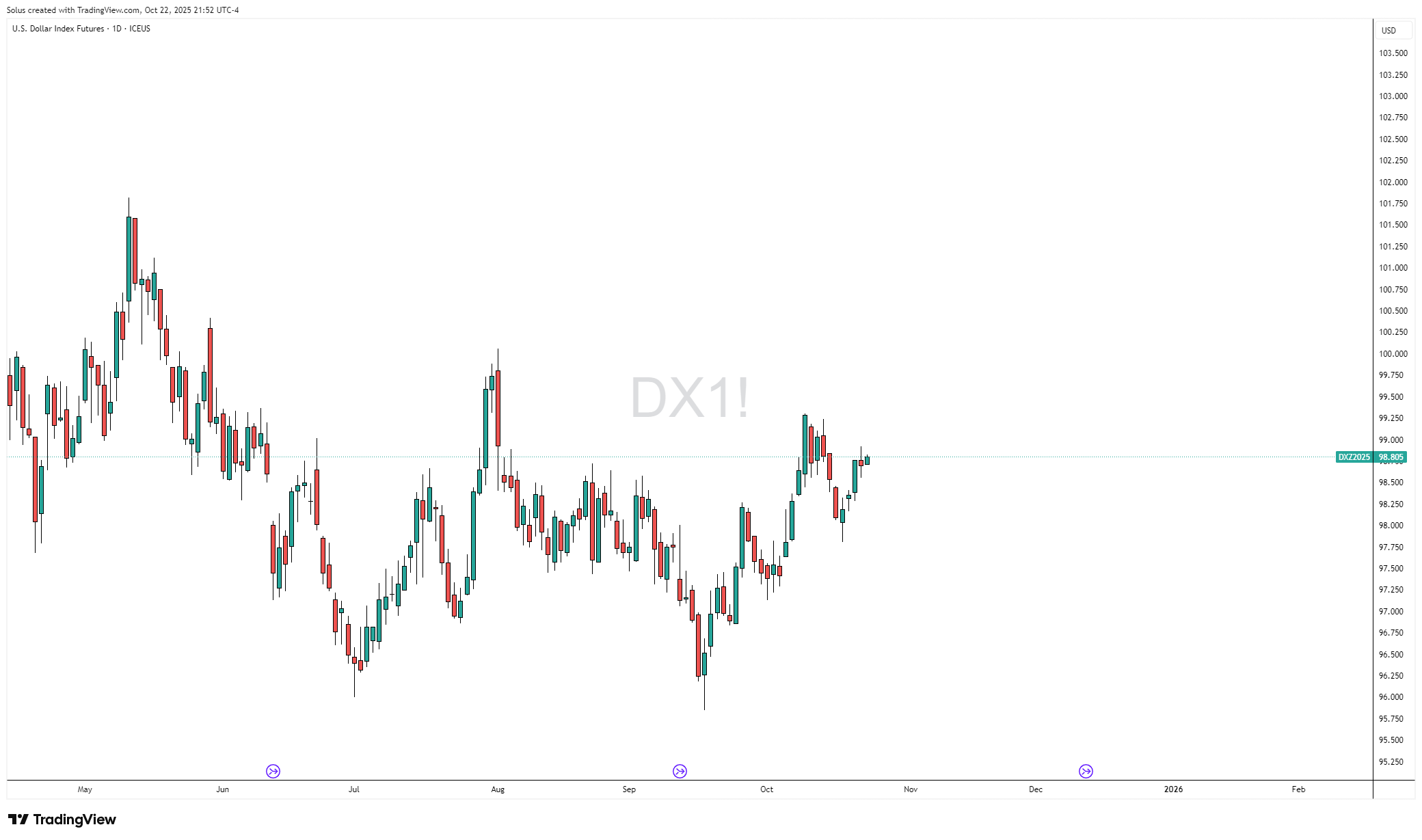
The US Dollar Index (DXY) and 10-Year Treasury Yield (US10Y) are two silent signals every metal trader should monitor.
- Rising DXY: Strength in the dollar often pressures metals. It means tighter liquidity, stronger USD pricing, and defensive capital positioning.
- Falling DXY: Usually reflects easing fears, improving global liquidity, and a friendlier environment for metals to recover.

Similarly, the 10-Year yield mirrors risk appetite. Higher yields reflect risk-taking and growth confidence (risk-on), while collapsing yields usually accompany fear, recession signals, or dovish policy expectations (risk-off).
Watch how gold’s candles react when yields suddenly drop on CPI surprises or Fed guidance shifts - these are your “fear rallies.”
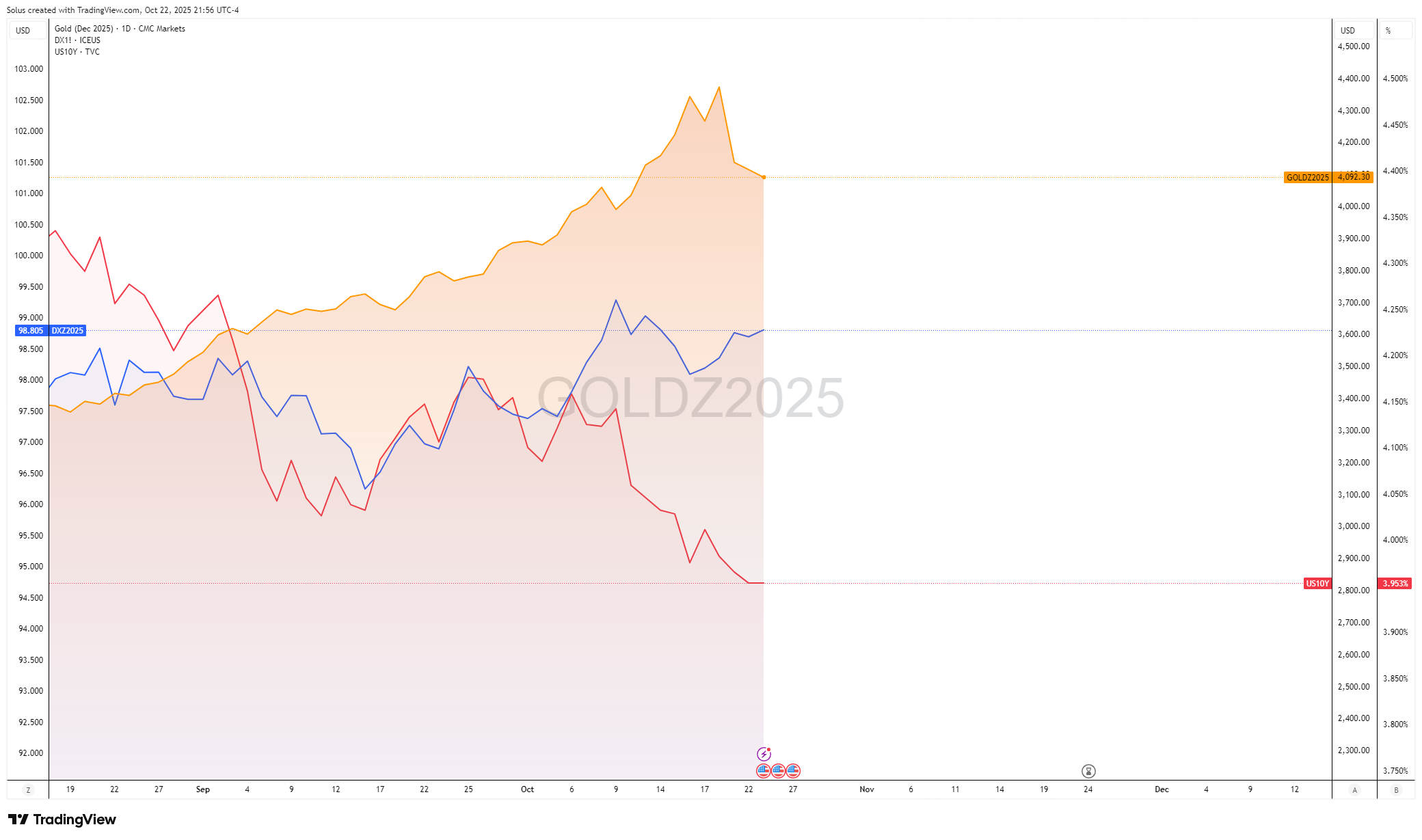
To see this behavior in action, explore How to Trade Risk-On and Risk-Off Sentiment, which breaks down how traders align entries and exits with shifts in global risk appetite using sentiment and price confluence.
Identifying Fear Rallies and Growth Dips
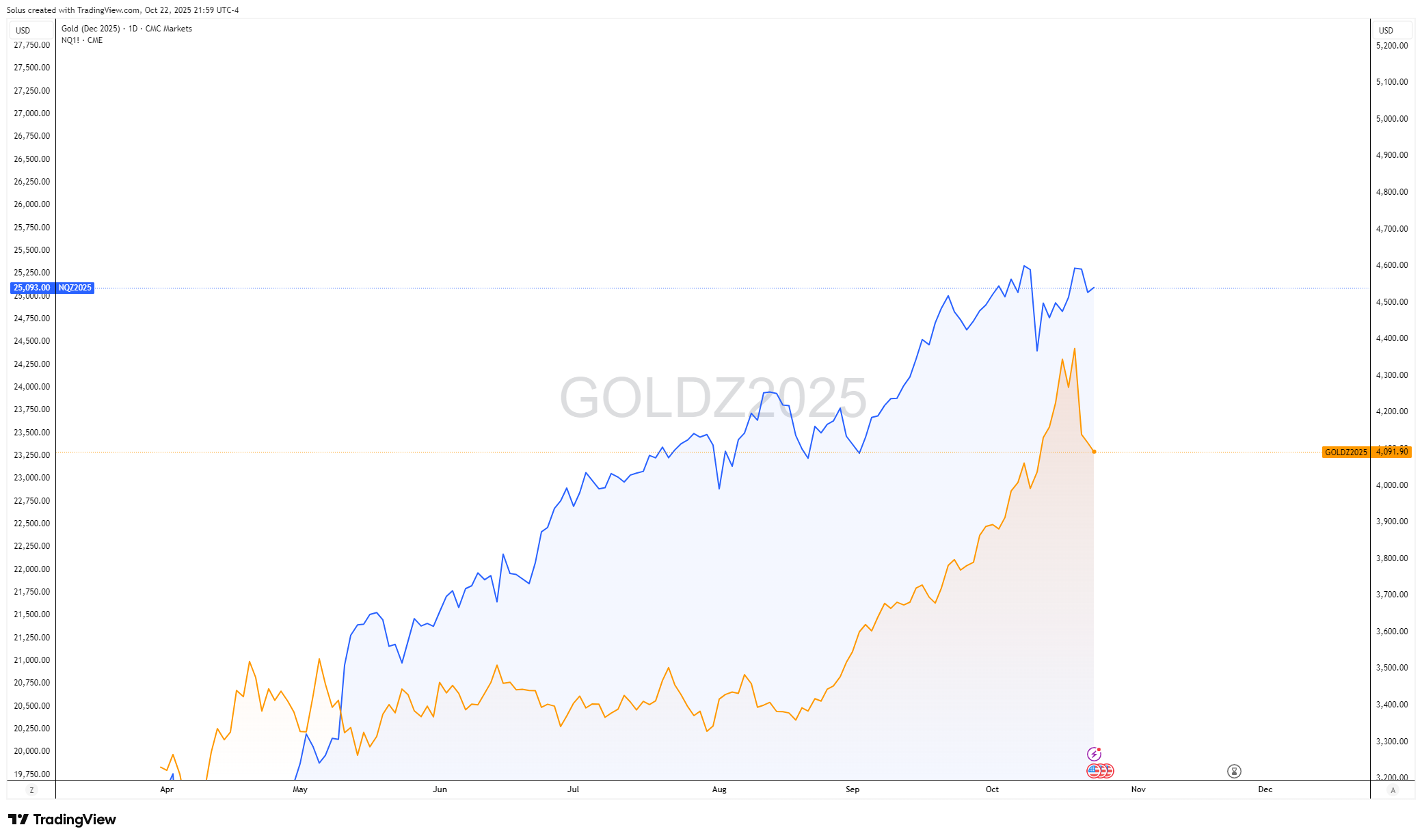
Every metal trader must learn to recognize when the move is emotional versus fundamental.
- Fear Rally: Gold surges as traders flee equities or price in policy cuts. These moves often come with strong displacements during Fed or CPI weeks, driven by panic rather than trend.
- Growth Dip: Copper or silver correct temporarily when data disappoints but resume their uptrend once risk appetite returns. These dips often offer discounted re-entries during high-volatility macro weeks.
When headlines flash “Data Delayed due to Shutdown” or “Fed Reassesses Path”, remember - it’s not just data being delayed; it’s clarity being delayed. That’s when liquidity tightens, and metals behave emotionally.
Tools to Determine Sentiment (and How to Compile Them)
While sentiment is invisible, it leaves tracks across markets. The most effective traders compile signals from multiple tools - like assembling a puzzle that reveals the market’s emotional tone.

Here are your go-to sentiment trackers:
- DXY (US Dollar Index): The higher it climbs, the more defensive markets become.
- US10Y Yield: Rising = confidence and growth; falling = fear and caution.
- VIX (Volatility Index): Known as the “fear gauge.” Above 20 often signals risk-off phases.
- Equity Indices (S&P 500, NASDAQ): When equities are strong, risk-on prevails; when they bleed, metals absorb the fear.
- Bond Futures and ETF Flows: Track capital rotation between bonds and stocks for sentiment shifts.
- COT Reports (Commitment of Traders): Show institutional positioning across commodities.
📊 How to Compile:
Create a small sentiment dashboard or watchlist. For example, in TradingView or Finlogix, list:
DXY, US10Y, VIX, S&P 500, XAU/USD, XAG/USD, and Copper.
Observe how they move relative to one another. A falling DXY + rising S&P + calm VIX = risk-on. A spiking VIX + falling yields + gold breakout = risk-off.
The goal isn’t to predict - it’s to contextualize. When the metals you trade align with this sentiment map, your confidence in execution multiplies.
Using Finlogix Sentiment to Gauge Market Positioning
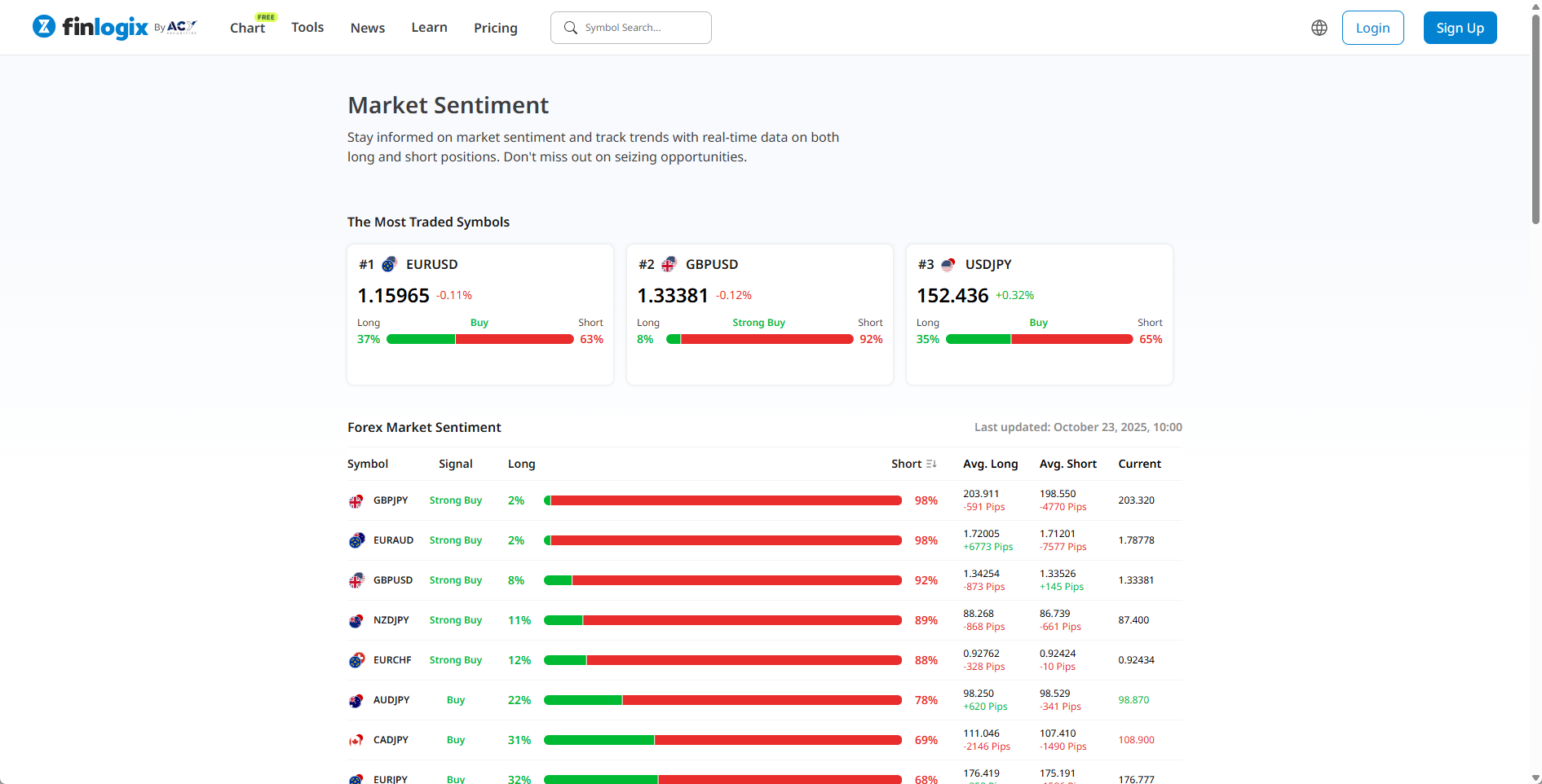
One of the most practical free tools for traders today is the Finlogix Sentiment Index.
It shows real-time data on what percentage of traders are long or short across major markets - from gold and silver to indices and currencies.
Here’s how to use it effectively:
- Identify Extremes: When the majority is long gold (e.g., 80%+), it often means retail traders are positioned late - a potential contrarian signal that smart money might fade.
- Cross-Compare Assets: Check if sentiment aligns across correlated markets. For instance, if traders are short USD and long gold, the broader market may be leaning risk-off.
- Monitor Shifts Around Events: Use it pre- and post-Fed, CPI, or NFP to gauge whether traders are flipping from fear to greed (or vice versa).
Caveat: Finlogix sentiment is a lagging indicator - it reflects positioning that’s already taken place. Use it as context, not confirmation.
Price action - especially structure, displacement, and liquidity sweeps - remains the most accurate real-time sentiment confirmation. Think of Finlogix sentiment as the weather forecast, and your chart as the live radar.
By combining these sentiment tools - macro indicators, positioning data, and price confirmation - you’ll trade with the emotional rhythm of the market, not against it.
Trading Plan for Volatile Macro Weeks
Fed meetings. CPI. NFP. These are your sentiment accelerators.
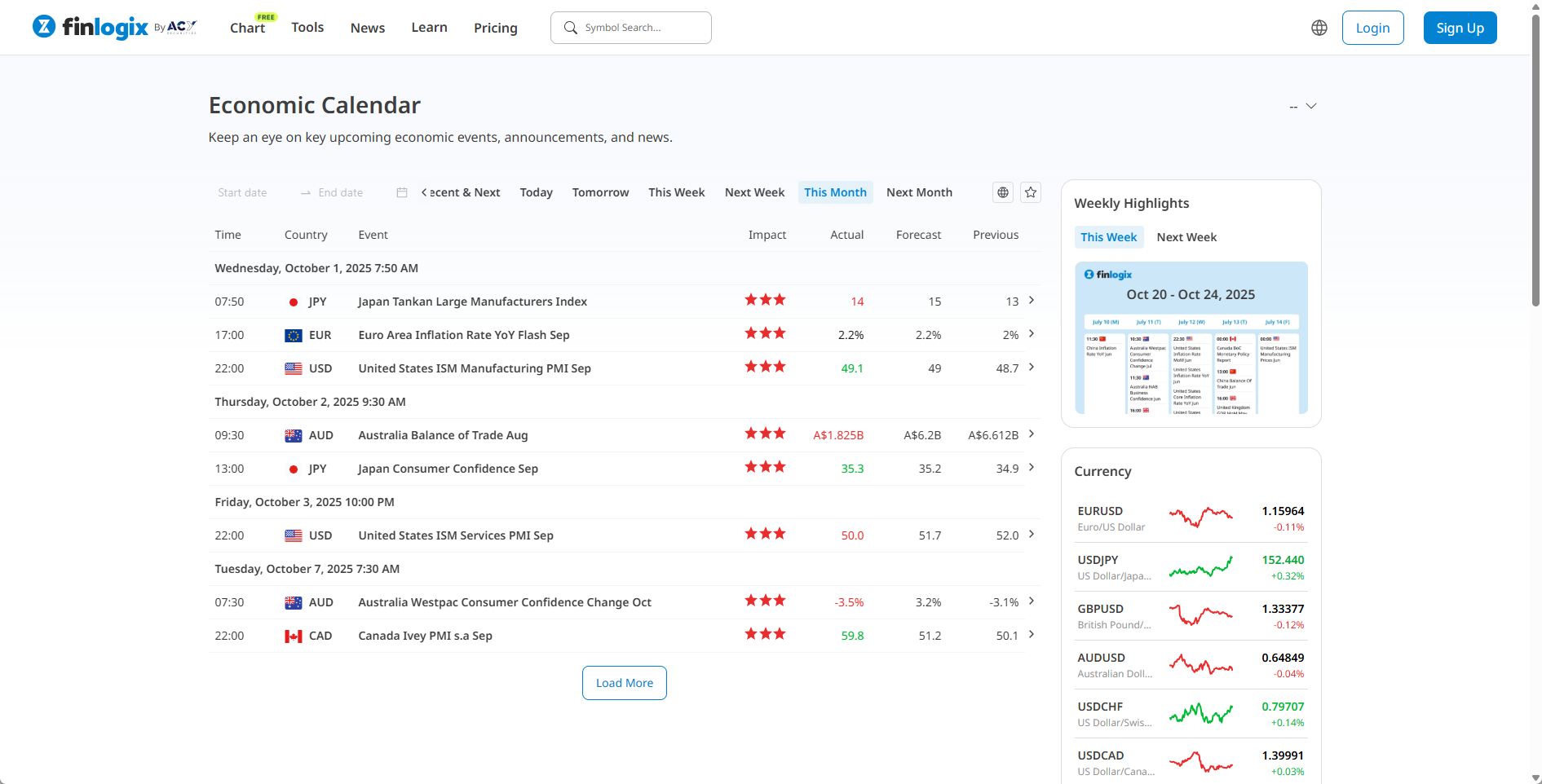
Instead of reacting, plan your week like a strategist:
- Map the Calendar: Mark key event days (FOMC, CPI, NFP). Expect volatility clusters around them.
- Track DXY & Yields: Align metal trades with their short-term direction. Weak DXY + falling yields = metal tailwinds.
- Use Structure, Not Emotion: On the chart, combine macro context with Smart Money Concepts (SMC) - look for liquidity sweeps and FVGs after event-driven whipsaws.
- Set Neutral Zones: Avoid taking new positions 12–24 hours before high-impact releases. Wait for the emotional flush.
- Fade Extremes: If metals spike into old liquidity after fear headlines, stalk confirmation signals for reversals.
By treating macro volatility as opportunity, not chaos, traders can ride both sides of sentiment instead of being trapped by it.
Real-Life Analogy: The Weather of the Market
Trading metals is like sailing across unpredictable weather.
Risk-on is your clear sky - smooth winds that favor industrial metals. Risk-off is the storm - choppy waves that lift gold’s sails and capsize copper’s. A skilled sailor doesn’t fear either; he adjusts his sails, not his course. Likewise, a skilled trader doesn’t guess sentiment - he reads it.
Final Thoughts

Sentiment is cyclical. What’s “fear” today becomes “greed” tomorrow.
The traders who last aren’t the ones predicting every shift, but those who recognize when the market’s heartbeat is changing and adjust accordingly.
Gold will always find a reason to rally in fear. Copper will always find a reason to rise in hope.
Your edge lies not in predicting which phase comes next - but in knowing which phase you’re in right now.
FAQs
1. What triggers a shift from risk-on to risk-off?
Events like inflation spikes, unexpected rate hikes, or geopolitical shocks typically shift sentiment from optimism to caution.
2. How does the US Dollar Index affect gold prices?
A stronger dollar usually pressures gold since it becomes more expensive for non-USD buyers. A weaker dollar supports gold rallies.
3. Why does silver sometimes move differently from gold?
Silver has a dual identity - part safe haven, part industrial metal. In mild risk-off phases, it follows gold; in strong growth cycles, it follows copper.
4. How can I measure market sentiment in real time?
Track DXY, US10Y yields, and the VIX together, then cross-check with Finlogix Sentiment data. Their alignment often reveals whether traders are embracing risk or running from it.
Start Practicing with Confidence - Risk-Free!
- Trade forex, indices, gold, and more
- Access ACY, MT4, MT5, & Copy Trading Platforms
- Practice with zero risk
It’s time to go from theory to execution - risk-free.
Create an Account. Start Your Free Demo!
Check Out My Contents:
Strategies That You Can Use
Looking for step-by-step approaches you can plug straight into the charts? Start here:
- How To Trade & Scalp Indices at the Open Using Smart Money Concepts (SMC)
- How to Trade Breakouts Effectively in Day Trading with Smart Money Concepts
- Complete Step-by-Step Guide to Day Trading Gold (XAU/USD) with Smart Money Concepts (SMC)
- The Power of Multi-Timeframe Analysis in Smart Money Concepts (SMC)
- Forex Trading Strategy for Beginners
- Mastering Candlestick Pattern Analysis with the SMC Strategy for Day Trading
- How to Use Fibonacci to Set Targets & Stops (Complete Guide)
- RSI Divergence Trading Strategy for Gold: How to Identify and Trade Trend Reversals
- Stochastics Trading Secrets: How to Time Entries in Trending Markets using Stochastics
- Gold Trading Stochastics Strategy: How to Trade Gold with 2R - 3R Targets
- RSI Hidden Divergence Explained: How to Spot Trend Continuations Like a Pro
- Moving Averages Trading Strategy Playbook
- Mastering Fibonacci Trading Psychology - Trusting the Levels, Managing the Mind
- Mastering Price Action at Key Levels - How to Spot, Trade, and Win at the Most Crucial Zones
- Mastering Retests: How to Enter with Confirmation After a Breakout
Indicators / Tools for Trading
Sharpen your edge with proven tools and frameworks:
- The Ultimate Guide to Risk Management in Trading - A Complete Compilation for 2025
- Moving Averages Trading Strategy Playbook
- How to Think Like a Price Action Trader
- Mastering Fibonacci Trading Psychology - Trusting the Levels, Managing the Mind
How To Trade News
News moves markets fast. Learn how to keep pace with SMC-based playbooks:
- Why Smart Money Concepts Work in News-Driven Markets - CPI, NFP, and More
- How to Trade NFP Using Smart Money Concepts (SMC) - A Proven Strategy for Forex Traders
- How to Trade CPI Like Smart Money - A Step-by-Step Guide Using SMC
Learn How to Trade US Indices
From NASDAQ opens to DAX trends, here’s how to approach indices like a pro:
- How to Start Trading Indices and Get into the Stock Market with Low Capital (2025 Guide)
- Best Indices to Trade for Day Traders | NASDAQ, S&P 500, DAX + Best Times to Trade Them
- How To Trade & Scalp Indices at the Open Using Smart Money Concepts (SMC)
- NAS100 - How to Trade the Nasdaq Like a Pro (Smart Money Edition)
How to Start Trading Gold
Gold remains one of the most traded assets - here’s how to approach it with confidence:
- How to Swing Trade Gold (XAU/USD) Using Smart Money Concepts: A Simple Guide for Traders
- Complete Step-by-Step Guide to Day Trading Gold (XAU/USD) with Smart Money Concepts (SMC)
- The Ultimate Guide to Backtesting and Trading Gold (XAU/USD) Using Smart Money Concepts (SMC)
- Why Gold Remains the Ultimate Security in a Shifting World
- How to Exit & Take Profits in Trading Gold Like a Pro: Using RSI, Range Breakdowns, and MAs as Your Confluence
How to Trade Japanese Candlesticks
Candlesticks are the building blocks of price action. Master the most powerful ones:
- Mastering the Top Japanese Candlesticks: The Top 5 Candlesticks To Trade + Top SMC Candlestick Pattern
- How to Trade Candlestick Patterns with High Probability: A Complete Guide for Beginners
- The Top Japanese Candlestick Guide: What is an Engulfing Pattern and How to Trade It?
- Piercing Pattern Candlestick Explained: How to Trade It - Step-By-Step Guide
- Morning & Evening Star Candlestick Patterns - How to Trade Market Reversals with Confidence
How to Start Day Trading
Ready to go intraday? Here’s how to build consistency step by step:
- 5 Steps to Start Day Trading: A Strategic Guide for Beginners
- 8 Steps How to Start Forex Day Trading in 2025: A Beginner’s Step-by-Step Guide
- 3 Steps to Build a Trading Routine for Consistency and Discipline - Day Trading Edition
- The Ultimate Guide to Understanding Market Trends and Price Action
- Trading with Momentum: The Best Trading Session to Trade Forex, Gold and Indices
Swing Trading 101
- Introduction to Swing Trading
- The Market Basics for Swing Trading
- Core Principles of Swing Trading
- The Technical Foundations Every Swing Trader Must Master
- Swing Trader’s Toolkit: Multi-Timeframe & Institutional Confluence
- The Psychology of Risk Management in Swing Trading
- Swing Trading Concepts To Know In Trading with Smart Money Concepts
- Becoming a Consistent Swing Trader: Trading Structure & Scaling Strategy
Learn how to navigate yourself in times of turmoil
Markets swing between calm and chaos. Learn to read risk-on vs risk-off like a pro:
- How to Identify Risk-On and Risk-Off Market Sentiment: A Complete Trader’s Guide
- How to Trade Risk-On and Risk-Off Sentiment - With Technical Confirmation
- The Ultimate Guide to Understanding Market Trends and Price Action
Want to learn how to trade like the Smart Money?
Step inside the playbook of institutional traders with SMC concepts explained:
- Why Smart Money Concepts Work: The Truth Behind Liquidity and Price Action
- Mastering the Market with Smart Money Concepts: 5 Strategic Approaches
- Understanding Liquidity Sweep: How Smart Money Trades Liquidity Zones in Forex, Gold, US Indices
- The SMC Playbook Series Part 1: What Moves the Markets? Key Drivers Behind Forex, Gold & Stock Indices
- The SMC Playbook Series Part 2: How to Spot Liquidity Pools in Trading - Internal vs External Liquidity Explained
- Fair Value Gaps Explained: How Smart Money Leaves Footprints in the Market
- Accumulation, Manipulation, Distribution: The Hidden Cycle That Runs Every Market
- Institutional Order Flow - Reading the Market Through the Eyes of the Big Players
- London Session Trading Secrets: How Smart Money Sets the High & Low of the Day
- Mastering the New York Session - Smart Money Concepts Guide
Master the World’s Most Popular Forex Pairs
Forex pairs aren’t created equal - some are stable, some are volatile, others tied to commodities or sessions.
- The Top 5 All-Time Best Forex Pairs to Trade
- Top Forex Pairs Beyond the Big Five
- EUR/USD: The King of Forex
- USD/JPY: The Fast Mover
- GBP/USD: The Volatile Cable
- AUD/USD: The Commodity Currency
- USD/CAD: The Oil-Backed Pair
- GBP/JPY: How to Trade The Beast
- Asian & London Session Secrets
- Mastering the New York Session
Metals Trading
- Metals Trading: Why Gold and Metals Are Rising Again
- Silver Trading: The Underdog with Dual Identity
- Gold vs Silver: Institutional Demand Breakdown Explained
- Platinum & Palladium: The Quiet Power Duo of Industrial Metals
Stop Hunting 101
If you’ve ever been stopped out right before the market reverses - this is why:
- Stop Hunting 101: How Swing Highs and Lows Become Liquidity Traps
- Outsmarting Stop Hunts: The Psychology Behind the Trap
- How to Lessen Risk From Stop Hunts in Trading
- How Stop Hunts Trigger Revenge Trading - Breaking the Pain Cycle
- How to Accept Stop Hunts Without Losing Discipline - Shifting From Frustration to Focus
Trading Psychology
Mindset is the deciding factor between growth and blowups. Explore these essentials:
- The Mental Game of Execution - Debunking the Common Trading Psychology
- Managing Trading Losses: Why You Can Be Wrong and Still Win Big in Trading
- The Hidden Threat in Trading: How Performance Anxiety Sabotages Your Edge
- Why 90% of Retail Traders Fail Even with Profitable Trading Strategies
- Top 10 Habits Profitable Traders Follow Daily to Stay Consistent
- Top 10 Trading Rules of the Most Successful Traders
- Top 10 Ways to Prevent Emotional Trading and Stay Disciplined in the Markets
- Why Most Traders Fail - Trading Psychology & The Hidden Mental Game
- Emotional Awareness in Trading - Naming Your Triggers
- Discipline vs. Impulse in Trading - Step-by Step Guide How to Build Control
- Trading Journal & Reflection - The Trader’s Mirror
- Overcoming FOMO & Revenge Trading in Forex - Why Patience Pays
- Risk of Ruin in Trading - Respect the Math of Survival
- Identity-Based Trading: Become Your Trading System for Consistency
- Trading Psychology: Aligning Emotions with Your System
- Mastering Fear in Trading: Turn Doubt into a Protective Signal
- Mastering Greed in Trading: Turn Ambition into Controlled Growth
- Mastering Boredom in Trading: From Restless Clicking to Patient Precision
- Mastering Doubt in Trading: Building Confidence Through Backtesting and Pattern Recognition
- Mastering Impatience in Trading: Turn Patience Into Profit
- Mastering Frustration in Trading: Turning Losses Into Lessons
- Mastering Hope in Trading: Replacing Denial With Discipline
- When to Quit on Trading - Read This!
- The Math of Compounding in Trading
- Why Daily Wins Matter More Than Big Wins
- Scaling in Trading: When & How to Increase Lot Sizes
- Why Patience in Trading Fuels the Compounding Growth
- Step-by-Step Guide on How to Manage Losses for Compounding Growth
- The Daily Habits of Profitable Traders: Building Your Compounding Routine
- Trading Edge: Definition, Misconceptions & Casino Analogy
- Finding Your Edge: From Chaos to Clarity
- Proving Your Edge: Backtesting Without Bias
- Forward Testing in Trading: How to Prove Your Edge Live
- Measuring Your Edge: Metrics That Matter
- Refining Your Edge: Iteration Without Overfitting
- The EDGE Framework: Knowing When and How to Evolve as a Trader
- Scaling Your Edge: From Small Account to Consistency
Market Drivers
- Central Banks and Interest Rates: How They Move Your Trades
- Inflation & Economic Data: CPI Trading Strategy and PPI Indicator Guide
- Geopolitical Risks & Safe Havens in Trading (Gold, USD, JPY, CHF)
- Jobs, Growth & Recession Fears: NFP, GDP & Unemployment in Trading
- Commodities & Global Trade: Oil, Gold, and Forex Explained
- Market Correlations & Intermarket Analysis for Traders
Risk Management
The real edge in trading isn’t strategy - it’s how you protect your capital:
- Mastering Risk Management: Stop Loss, Take Profit, and Position Sizing
- Why Risk Management Is the Only Edge That Lasts
- How Much Should You Risk per Trade? (1%, 2%, or Less?)
- The Ultimate Risk Management Plan for Prop Firm Traders - Updated 2025
- Mastering Position Sizing: Automate or Calculate Your Risk Like a Pro
- Martingale Strategy in Trading: Compounding Power or Double-Edged Sword?
- How to Add to Winners Using Cost Averaging and Martingale Principle with Price Confirmation
Suggested Learning Path
If you’re not sure where to start, follow this roadmap:
- Start with Trading Psychology → Build the mindset first.
- Move into Risk Management → Learn how to protect capital.
- Explore Strategies & Tools → Candlesticks, Fibonacci, MAs, Indicators.
- Apply to Assets → Gold, Indices, Forex sessions.
- Advance to Smart Money Concepts (SMC) → Learn how institutions trade.
- Specialize → Stop Hunts, News Trading, Turmoil Navigation.
This way, you’ll grow from foundation → application → mastery, instead of jumping around randomly.
Follow me for more daily market insights!
Jasper Osita - LinkedIn - FXStreet - YouTube
This content may have been written by a third party. ACY makes no representation or warranty and assumes no liability as to the accuracy or completeness of the information provided, nor any loss arising from any investment based on a recommendation, forecast or other information supplies by any third-party. This content is information only, and does not constitute financial, investment or other advice on which you can rely.
Try These Next
4 Powerful Tactics to Overcome the Most Costly Forex Mistakes
How to Master MT4 & MT5 - Tips and Tricks for Traders
The Importance of Fundamental Analysis in Forex Trading
Forex Leverage Explained: Mastering Forex Leverage in Trading & Controlling Margin
The Importance of Liquidity in Forex: A Beginner's Guide
Close All Metatrader Script: Maximise Your Trading Efficiency and Reduce Stress
Best Currency Pairs To Trade in 2025
Forex Trading Hours: Finding the Best Times to Trade FX
MetaTrader Expert Advisor - The Benefits of Algorithmic Trading and Forex EAs
Top 5 Candlestick Trading Formations Every Trader Must Know















